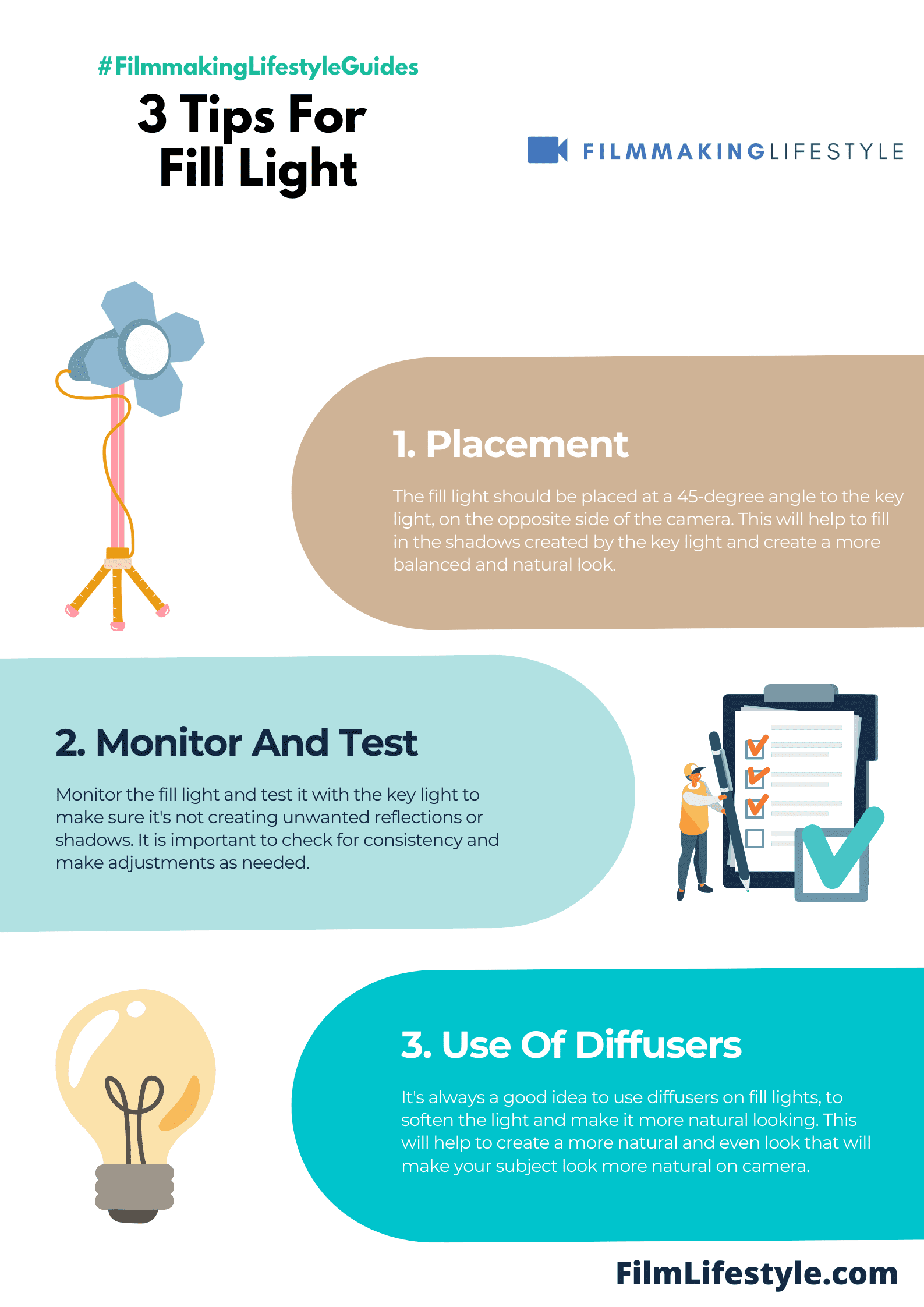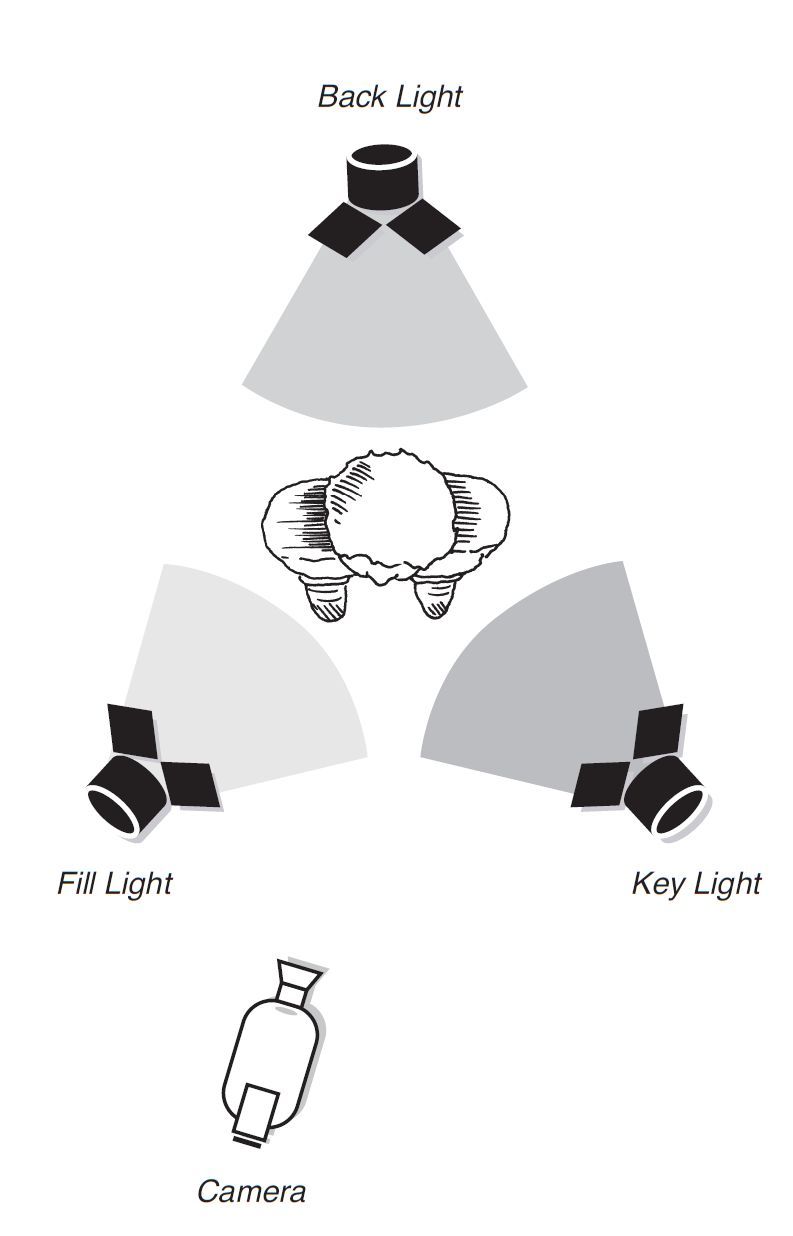In the world of photography and filmmaking, mastering light is key, and fill light plays a pivotal role.
It’s the secret sauce that banishes unwanted shadows and brings balance to your images.
We’ll jump into why it’s a game-changer for both amateurs and pros alike.
Understanding fill light is crucial for creating visually stunning work.
We’re here to break down its importance, how to use it effectively, and the impact it has on the mood and quality of your shots.
Stick with us as we illuminate the ins and outs of this essential lighting technique.
WHAT IS FILL LIGHT
What Is Fill Light?
The term ‘fill’ is often used in cinematography and photography lighting to refer to the light that fills in or washes out shadows and dark areas of an image.
Fill light can be natural, such as sunlight or a window, or artificial like an off-camera flash.
Knowing how to control and use fill light will help you improve your images by giving them more depth and dimension.
What Is Fill Light?
Fill light plays a pivotal role in both filmmaking and photography, although our focus here tends toward the cinematic application.
In essence, it is the secondary light source that’s used to reduce contrast in a scene.
Without fill light, shadows cast by the main light source, often called the key light, would be too harsh.
This additional light is softer and less intense than the key light.
It does not drastically alter the scene but works to provide detail and clarity in the darker areas of the frame.
When dealing with a complex setup, like in Blade Runner 2049, subtle fill light helps reveal textures and shapes without compromising the dramatic effect of the shadows.
Establishing the right balance between the key light and fill light is critical.
Too much fill can flatten an image, making it appear lifeless, while too little can lose valuable detail in shadows, leading to an overly dramatic or unrealistic look.
Here are some of the benefits of using fill light effectively:
- It can bring out the best in your subject, providing a more three-dimensional look.
- It helps in maintaining consistency in lighting, which is crucial for scenes shot at different times of the day or under varying weather conditions.
- It allows for manipulation of mood and tone, giving the filmmaker creative control over how a scene feels to the audience.
Mastering the art of fill light requires understanding not just its purpose but how it interacts with other lighting elements.
In The Godfather, for example, fill light was used minimally to create the iconic dark, moody scenes that added a layer of mystery to the characters’ emotions and intentions.
Why Is Fill Light Important?
Fill light serves a crucial role in visual storytelling.
It sculpts scenes and characters, providing depth that’s essential for immersing viewers in the cinematic world.
Key and fill light work in tandem – their interplay shapes the mood of a scene.
With skillful use, we establish ambiance, from tension and mystery to clarity and openness.
Understanding light ratios helps us craft a film’s aesthetic.
A lower ratio brings a softer, more even light to a scene, while a higher ratio creates drama with pronounced shadows.
With fill light, subtlety is our ally.
We can evoke emotions and steer audience focus without overt manipulation, keeping the magic of cinema alive in the viewer’s mind.
The manipulation of fill light allows for:
- Creative control over scene contrast,
- Influence on the narrative through visual cues,
- An enhanced three-dimensional perception.
It’s our tool to combat unwanted shadow effects.
By reducing contrast where needed, we ensure no critical details are lost to darkness.
Even in scenes where shadows play a pivotal role, like in The Godfather, fill light is meticulously balanced to achieve that iconic moody aesthetic.
It maintains visual coherence while enriching the film’s storytelling.
Fill light aids in creating a consistent look across various shots.
This consistency is vital for maintaining the illusion of a singular space and time, keeping the audience engaged.
Maintaining fill light serves practicality on set.
We’re able to adjust exposure with ease and capture footage conducive to post-production processes, such as color grading and compositing.
By mastering fill light, we unlock the full potential of our visual expressions.
We shape not just light and shadow, but the way our stories feel and are perceived.
Using Fill Light Effectively
When we’re crafting a scene, the effective use of fill light can make or break the shot.
It’s not just about illuminating the shadows – it’s about balancing the light to achieve the intended mood and style.
Correctly positioned fill light can eliminate unwanted shadows under the eyes or chin, commonly referred to as “raccoon eyes,” which can distract from the subject’s performance.
To harness fill light to its full potential, we adhere to tried-and-true techniques.
We determine the optimal fill light intensity by considering the key-to-fill light ratio – this guides us in achieving the desired effect, whether it’s to make a scene appear more natural or to create a dramatic atmosphere.
- Positioning is key – we place the fill light opposite to the key light to soften the shadows while maintaining depth.
- Diffusion is crucial – we often soften the fill light with a diffuser or bounce it off a reflective surface to ensure that it doesn’t overpower the key light.
- Color temperature matters – we match the fill light to the key light to maintain color consistency, unless a creative choice dictates otherwise.
Fill light is instrumental in outdoor scenes as well.
During an exterior shoot, we often use reflectors to redirect natural light or employ supplementary light sources that complement the ambient lighting conditions.
We pay close attention to the natural light direction and quality during golden hour.
Careful use of fill light during this time can accentuate the warm, soft look that filmmakers and audiences adore in movies like Days of Heaven.
Understanding the interplay between shadows and light aids us in sculpting a scene’s final look.
Properly used fill light is a powerful narrative tool.
It supports the director’s vision and ensures that the actors’ performances are seen in the best possible ‘light’.
The Impact Of Fill Light On Mood And Quality
When we tweak the intensity and angle of our fill light, we’re manipulating more than just the shadows on set.
We’re also crafting the emotional undertones audiences will feel.
Precisely placed fill light can soften a character’s features, fostering empathy, or it can be minimized to cast deep shadows for a sense of foreboding.
Each of these subtle alterations shapes the overall mood of a scene.
The right balance of fill light ensures the highest quality visuals.
Scenes come to life with depth and texture, giving our audience a visual treat that holds their attention.
An uneven lighting setup can be the downfall of an otherwise high-quality production.
Our commitment to maintaining a well-balanced fill light not only saves us post-production headaches, but it also preserves the integrity of our work.
Here are some key points about fill light and its role in creating mood and visual quality:
- Harmonized contrast elevates the story’s visual narrative.
- Depth perception is enhanced through skillful lighting giving a three-dimensional illusion.
- Emotional cues are communicated through lighting choices, influencing audience engagement.
Scenes in films like The Godfather demonstrate how critical fill light is for setting the tonal landscape.
Our discerning use of fill light helps us to emulate such iconic cinematic styles.
Understanding and mastering fill light is essential for filmmakers.
It allows us to direct our viewer’s attention, convey emotions nonverbally, and determine the overall quality of the final product.
Managing fill light effectively shapes not only the look of the film but also how it’s experienced by audiences worldwide.
What Is Fill Light – Wrap Up
We’ve explored the transformative power of fill light and its pivotal role in visual storytelling.
As we’ve seen, it’s not just about illumination; it’s about crafting a scene that resonates with viewers on an emotional level.

Whether we’re aiming for subtlety or dramatic effect, mastering fill light is key to creating depth and dimension in our work.
Let’s harness this knowledge to elevate our visual narratives and captivate our audience with every shot.
Remember, the right fill light can make all the difference in bringing our cinematic visions to life.
Frequently Asked Questions
What Is The Main Purpose Of Fill Light In Photography And Filmmaking?
Fill light is used to control the contrast and shape the mood of a scene by softening shadows and adding depth.
It helps to sculpt scenes and characters, influencing the narrative through visual cues.
How Does Fill Light Affect The Mood And Narrative In A Cinematic Context?
Fill light influences the mood and narrative by adjusting scene contrast.
Lower light ratios create a softer, more even look, while higher ratios produce drama with pronounced shadows, manipulating the viewer’s emotional response.
Why Is Understanding Light Ratios Important In Filmmaking?
Understanding light ratios is crucial for crafting a film’s aesthetic.
It allows filmmakers to strike the right balance between shadows and light, thereby contributing to the storytelling and producing the desired emotional effect.
Can Fill Light Enhance The Three-dimensional Perception Of A Scene?
Yes, fill light enhances the three-dimensional perception of a scene by adding depth and minimizing flat-looking shots.
This provides a more dynamic and visually coherent image, similar to how human eyes perceive real-life scenes.
What Role Does Fill Light Play In Creating A Consistent Look Across Shots?
Fill light aids in maintaining visual coherence by ensuring consistent lighting across different shots.
This helps create a seamless visual flow and narrative consistency throughout the film.
How Does Fill Light Contribute To The Practicality On Set?
Fill light contributes to practicality on set by allowing filmmakers to manage scene contrast and shadow intensity in real-time, ensuring that the desired visual effect is achieved during the shoot rather than in post-production.
What Is The Significance Of Harmonized Contrast In Filmmaking?
Harmonized contrast is significant as it ensures that the light and dark areas of a scene blend smoothly, creating a natural and visually appealing look that supports the story and emotional tone of the film.
In What Way Does Fill Light Serve Nonverbal Storytelling?
Fill light serves nonverbal storytelling by enabling filmmakers to guide the viewer’s attention and convey emotions through light and shadow, without relying solely on dialogue or sound.
How Did Iconic Cinematic Styles, Like In The Godfather, Utilize Fill Light?
Iconic cinematic styles, such as those seen in The Godfather, expertly utilized fill light to create a signature look with deep shadows and moody contrasts, contributing to the film’s dramatic and memorable visual style.



